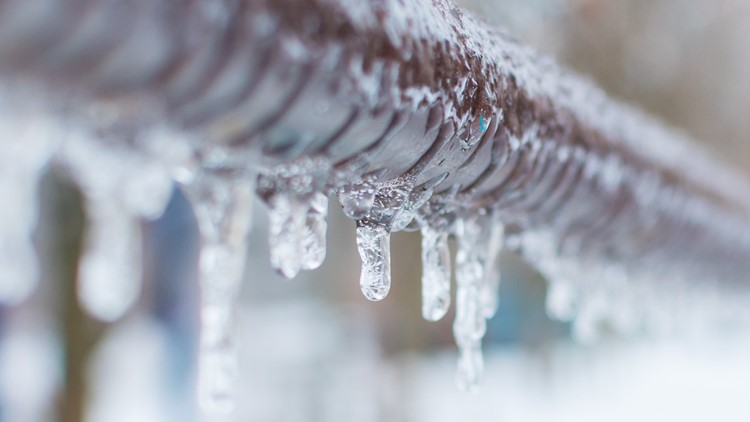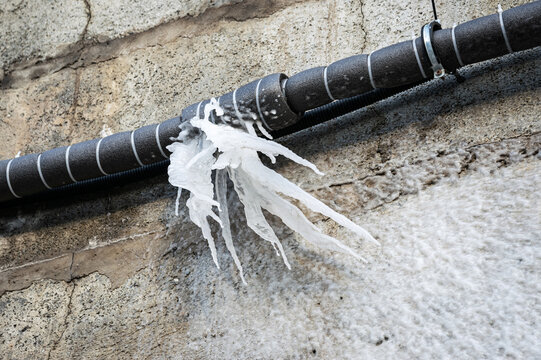Protecting Pipes from Freezing: Effective Strategies
Protecting Pipes from Freezing: Effective Strategies
Blog Article
Are you currently on the lookout for facts and techniques on How to Prevent Your Pipes From Freezing?

Winter can ruin your pipes, particularly by freezing pipelines. Here's how to prevent it from occurring and what to do if it does.
Introduction
As temperature levels decline, the risk of frozen pipelines rises, possibly resulting in expensive repairs and water damages. Recognizing just how to stop icy pipelines is critical for house owners in cold environments.
Avoidance Tips
Insulating susceptible pipes
Wrap pipes in insulation sleeves or utilize warm tape to safeguard them from freezing temperature levels. Concentrate on pipelines in unheated or external areas of the home.
Home heating methods
Maintain interior areas adequately warmed, specifically locations with plumbing. Open up cabinet doors to enable cozy air to circulate around pipelines under sinks.
Just how to determine frozen pipes
Search for reduced water circulation from faucets, uncommon odors or noises from pipes, and noticeable frost on exposed pipes.
Long-Term Solutions
Structural modifications
Take into consideration rerouting pipelines away from exterior walls or unheated areas. Include added insulation to attic rooms, basements, and crawl spaces.
Upgrading insulation
Purchase top notch insulation for pipelines, attics, and walls. Correct insulation aids keep constant temperature levels and lowers the risk of frozen pipes.
Protecting Outdoor Pipes
Garden pipes and exterior faucets
Disconnect and drain pipes yard pipes before winter months. Install frost-proof spigots or cover outside taps with shielded caps.
Recognizing Icy Pipes
What creates pipes to freeze?
Pipelines freeze when revealed to temperatures listed below 32 ° F (0 ° C) for prolonged periods. As water inside the pipes freezes, it broadens, taxing the pipeline walls and potentially causing them to burst.
Threats and damages
Icy pipelines can result in supply of water disturbances, residential or commercial property damages, and expensive repairs. Ruptured pipelines can flood homes and create extensive structural damage.
Indications of Frozen Water Lines
Identifying frozen pipes early can stop them from bursting.
What to Do If Your Pipes Freeze
Immediate activities to take
If you think frozen pipelines, keep taps open to relieve stress as the ice thaws. Utilize a hairdryer or towels taken in hot water to thaw pipelines slowly.
Conclusion
Preventing icy pipelines requires positive steps and fast actions. By recognizing the reasons, indications, and safety nets, property owners can safeguard their plumbing during cold weather.
5 Ways to Prevent Frozen Pipes
Drain Outdoor Faucets and Disconnect Hoses
First, close the shut-off valve that controls the flow of water in the pipe to your outdoor faucet. Then, head outside to disconnect and drain your hose and open the outdoor faucet to allow the water to completely drain out of the line. Turn off the faucet when done. Finally, head back to the shut-off valve and drain the remaining water inside the pipe into a bucket or container. Additionally, if you have a home irrigation system, you should consider hiring an expert to clear the system of water each year.
Insulate Pipes
One of the best and most cost-effective methods for preventing frozen water pipes is to wrap your pipes with insulation. This is especially important for areas in your home that aren’t exposed to heat, such as an attic. We suggest using foam sleeves, which can typically be found at your local hardware store.
Keep Heat Running at 65
Your pipes are located inside your walls, and the temperature there is much colder than the rest of the house. To prevent your pipes from freezing, The Insurance Information Institute suggests that you keep your home heated to at least 65 degrees, even when traveling. You may want to invest in smart devices that can keep an eye on the temperature in your home while you’re away.
Leave Water Dripping
Moving water — even a small trickle — can prevent ice from forming inside your pipes. When freezing temps are imminent, start a drip of water from all faucets that serve exposed pipes. Leaving a few faucets running will also help relieve pressure inside the pipes and help prevent a rupture if the water inside freezes.
Open Cupboard Doors
Warm your kitchen and bathroom pipes by opening cupboards and vanities. You should also leave your interior doors ajar to help warm air circulate evenly throughout your home.

Do you enjoy more info about How To Avoid Freezing Pipes? Post a remark further down. We'd be happy to hear your views about this blog entry. We hope that you come back again in the future. Sharing is caring. Helping people is fun. Kudos for being here. Please come visit our site back soon.
Book Maintenance Report this page